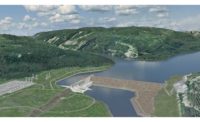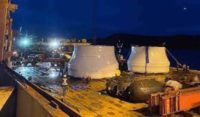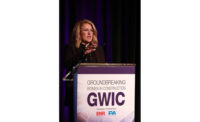Work on Canada's Site C hydroelectric dam project in northern British Columbia is entering its final stages as a key regulatory decision looms for the long-awaited $12.1-billion megaproject.
Owner BC Hydro anticipates this fall to begin filling the reservoir that will power the project. It said work was completed in early July on a highway rerouting required to accommodate the filling process. Five new bridges were erected as part of the realignment.
A consortium of Acciona Infrastructure Canada, Petrowest Corp. and Samsung C&T Canada won the main civil construction contract for the Site C project in 2015 that includes construction of the earthfill dam, two diversion tunnels and the concrete foundation for the generating station and spillways.
But BC Hydro awaits a key ruling by the province’s Environmental Assessment Office on whether builders can leave about 50 acres of construction debris at the bottom of the Peace River, which will be widened. The filling process will take about four months, it says. Once completed, the reservoir will be about three times wider than the river.
Under the utility proposal, 45 different structures would be left in place, including riprap causeways built for work on the reservoir and concrete abutments from temporary construction bridges and concrete anchors, according to requests filed. Other project remnants would include access roads, a barge pad and a boat ramp.
Not having to remove an estimated 2 million sq ft of construction debris is a key issue for the project, which has doubled in cost since its 2014 estimate, was ranked in January as Canada's most expensive infrastructure project.
Its last major cost increase, totaling more than $3.8 billion, was announced in 2021 as a result of impacts from COVID-19, among other issues, utility spokesperson Greg Alexis told ENR. Project completion was also extended a year from 2024 to 2025.
BC Hydro contends that keeping structures in place also would be less disruptive to fish habitat, with removal set to "increase the risk of sediment in the river and would require [it] to excavate into riverbanks and riverbeds,” a spokesperson for the B.C. Ministry of Energy, Mines and Low Carbon Innovation stated in an email.
All structures left in place will first be examined by an environmental expert, the spokesperson wrote. A technical advisory committee, made up of representatives from Indigenous Nations, local governments and regulatory agencies now is reviewing BC Hydro’s request, with a decision “pending” by the province, the email said.
Meanwhile, work on the project now is about 75% complete, with the new hydroelectric plant, which will have the capacity to generate about 5,000 GWh of electricity annually, starting up in late 2025.
The number of Site C workers has expanded, reaching a high of 5,985 in May, BC Hydro said.
Procurement, Transmission Issues
Along with pushing the project toward completion, BC Hydro has also faced some issues raised in a recent analysis by The Narwhal, a Canadian investigative news site on environmental issues.
It focused on BC Hydro sole-source contracts among its $326 million in engineering and construction contracts to three dozen consultants and companies for work on Site C dam.
One project opponent described its procurement process as “shrouded in secrecy and lack of transparency,” but utility spokesperson Alexis contends that 90% of Site C contracts have been competitively bid, with 10% through “direct award."
In cases of contracts awarded without competitive bidding, “there are strict rules that govern when a direct award can be made, such as creating economic opportunities for Indigenous businesses,” he said.
With a pressing province need for more clean energy, B.C. premier David Eby also told media in June that BC Hydro has not “kept up with their processes to be able to respond” to the challenge of moving power to new areas of demand, noting that the “eight to 10 years to build a new transmission line … is not an acceptable situation.”
The province is expected to need an added 3,000 GW-hours of power starting as early as 2028, he said.
LNG Canada, soon to complete the $14-billion first phase of its giant LNG export terminal in Kitimat hundreds of miles from the Site C project, has not committed to building its potential second phase able to use all electrified power. The first phase is natural-gas powered.
CEO Jason Klein said in an interview before a recent energy conference in Vancouver that electrifying the second phase—a construction project not yet in final investment—would require “significant capital investment across the value chain, including building large-scale transmission lines."
He added, “there’s a long way to go before BC Hydro is ready to talk to any of the industry players in the northwest about how that infrastructure could be built and funded and what the costs would look like. We strongly encourage BC Hydro and the provincial government to find the pathways needed to unlock the potential for additional electric power."
Even so, BC Hydro said last month it will launch in 2024 its first call in 15 years for “new sources of clean and renewable energy.”
Utility CEO Chris O’Riley said earlier this year that while the Site C project official commissioning target remains two years away, "we do have a shot at getting first power this coming December. Lots of things have to go right for that to occur.”





Post a comment to this article
Report Abusive Comment